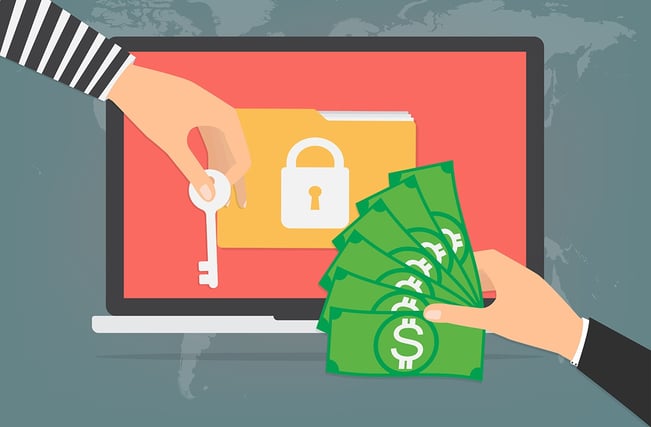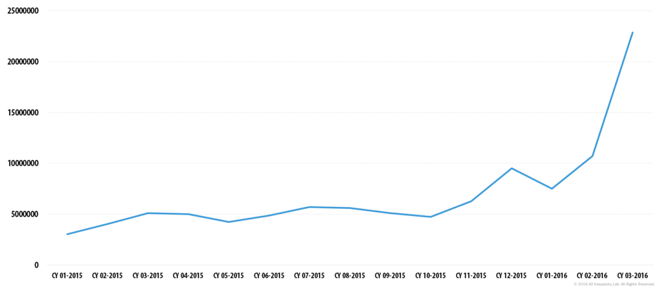Back in early January, we gave you a prediction for the Top 7 Cyber Crime Threats for 2016. Now that we are just over half of the way through the year, we thought we would revisit that article and give you some 2016 cybersecurity statistics so far.
Ransomware
The first trend that we definitely should have given more attention to (but couldn’t predict), is ransomware. Ransomware was listed as the sixth biggest threat for 2016 behind the likes of personally identifiable information (PII), next generation tech, malvertising, the exposure of Apple’s operating systems, and authentication issues. According to ZD Net, ransomware has replaced advanced persistent threat (APT) network attacks as the most problematic cyberthreat in 2016. In the first quarter alone, security experts at Kaspersky Lab detected 2,900 new ransomware malware modifications which is a rise of 14 percent compared to 2015. Furthermore, the FBI reported that the amount paid to ransomware criminals jumped from $25 million in 2015 to $200 million in the first three months of the year. That’s an 800% increase compared to the entire year of 2015.

Phishing
Over the last two years, the number of emails sent to users containing malicious attachments fluctuated between 3 and 6 million. At the end of March 2016, the number of email antivirus detections reached just under 23 million, which is four times more than the average for the same period last year. The graph below shows the number of email antivirus detections on computers with a Kaspersky Lab product installed. The sharp increase towards the end shows the drastic increase of malicious emails between January and March.

While phishing has been around for a while, cybercriminals are becoming more sophisticated with their attacks. A form of phishing called ‘whaling’ has become more popular. Hackers are looking to break into an organization’s network by forming personal emails and sending them to high level executives from addresses that look legitimate to the user. In the last two years alone, as many as 7,000 US businesses have fallen victim to whaling attacks, resulting in over $740 million in losses.
Data Breaches
In the last two months, over 500 million usernames and passwords have been dumped into the Dark Web by a hacker who goes by the name of “Peace.” The usernames and passwords came from the data breaches of LinkedIn, MySpace, and Tumblr. As with most data breaches, “Peace” probably gained access to the network of these companies through phishing campaigns where an employee (the weakest link!) clicked on an email containing a malicious link or file which allowed the hacker in.
The 2016 cybersecurity statistics for the first six months should scare you. As they always say, numbers don’t lie! While light has certainly been shown on the cybersecurity world, the truth is, these cybercriminals are making too much money to stop what they are doing. As soon as one fix comes out for a certain type of malware or an antivirus comes out to stop certain email scams, cybercriminals are inevitably going to find another way to hack into your systems.
Fortunately, WatchPoint has developed CryptoStopper.io. CryptoStopper.io is a software that monitors your shared files and detects and isolates the attack the moment ransomware (the biggest cybersecurity threat!) hits the network. An alert is sent to the administrator, and the host is disconnected from the server, minimizing any damage before encryption takes place.
While it is important to put as many barriers in place to prevent malware from hitting your network, there is nothing that can keep you 100% safe. Prevention is key, but protection is a must. Check out CryptoStopper.io and see how WatchPoint can protect your business from ransomware.
Other relative articles:
Over 400 Million Affected in Latest Hacks
How to Protect Personally Identifiable Information from Ransomware Attacks
Ransomware Destroying Businesses: How Do you Stop It?

